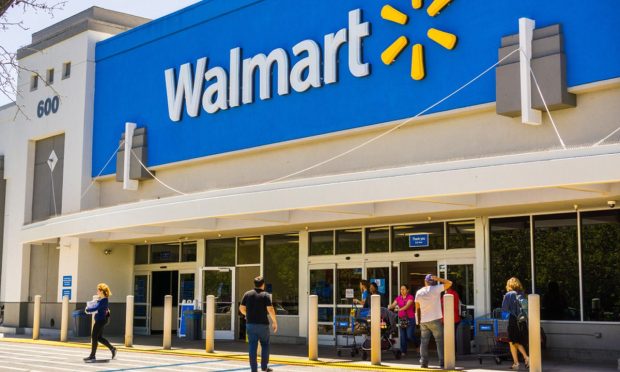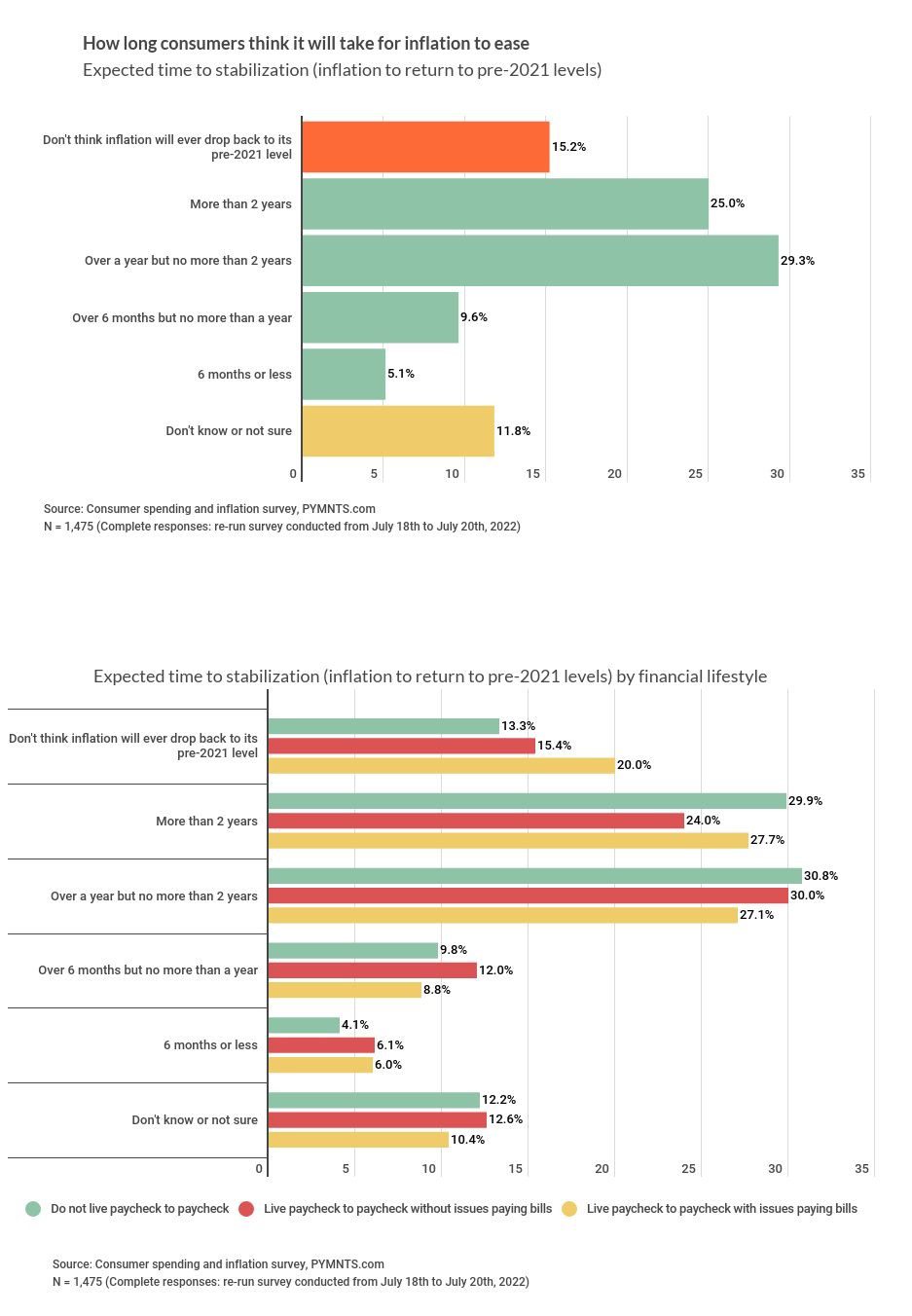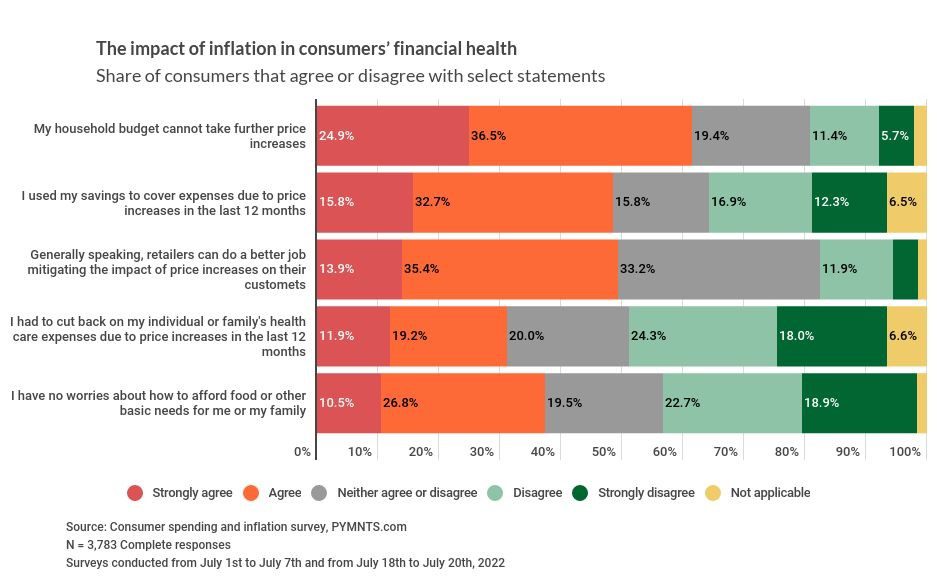As Walmart Warns, Consumers See Nearly 2 Years of Inflation Pain Ahead

Walmart’s profit warning on Monday (July 25) sent shockwaves through already jittery markets, in effect confirming new PYMNTS research showing that over half of U.S. consumers feel worse off financially now than in 2021 — and don’t see substantive relief coming until mid-2024.
“Food inflation is double digits and higher than at the end of Q1,” the retail bellwether said in its second such warning in under three months. “This is affecting customers’ ability to spend on general merchandise categories and requiring more markdowns to move through the inventory, particularly apparel.”
Walmart president and CEO Doug McMillon singled out food and fuel costs as the primary drivers.
In a Monday (July 25) analysis ahead of Walmart’s earnings call, PYMNTS’ Karen Webster presented a detailed account of the current situation based on a national online study of nearly 3,800 consumers conducted by PYMNTS in July. We found 53% of consumers surveyed said their finances have wilted since 2021, with almost one-third expecting the crunch to worsen.
Highlights of that research include the finding that 70% of shoppers, including those earning $100,000 per year or more, are dropping nonessential purchases like home décor, apparel and consumer electronics. What’s more, they expect that shift in spending to drag on.
“Consumers also think they’ll be living with higher prices for a while,” Webster wrote. “Specifically, they estimated 653 days longer from the day they responded to the survey.”
Respondents don’t see a return to 2020 inflation levels averaging 2% until the second quarter of 2024, which “is three times as high as the number who believe things will return to those levels by the end of the 2022,” she wrote.
Read: Why Retailers Should Worry About Inflation but Dread the Wealth Effect

Wisdom of the Crowd Beats BLS
With the June Consumer Price Index (CPI) hitting a new highwater mark of 9.1%, Bureau of Labor Statistics (BLS) data shows increases of between 5% to 15% in most retail and grocery categories, but consumers doing the spending say increases are on the order of 20% to 30%.
Felt most acutely by lower-earning consumers — the Walmart shopper, broadly speaking — PYMNTS nevertheless found 44% of high earners saying they’re in worse shape than 2021 as well, with 32% of this group saying inflation will rob them of more spending power before 2022 is done.
When high earners start belt-tightening it’s a strong indicator of difficulties ahead.
“The double hit of the decline in financial wealth from stock market volatility and the high levels of inflation are causing nearly all consumers, regardless of demographic group or income, to adjust their spending,” Webster wrote. “It isn’t only about whether consumers have money to spend, it’s whether they will spend the money they have — and where. When high earners tighten their purse strings, the ripple effect across the economy will be felt.”
See also: Walmart Cuts Q2, FY23 Profit Outlook as It Lowers Prices to Move Goods

Among sectors feeling inflation’s squeeze most acutely is the restaurant business. The new PYMNTS data finds that nearly eight in 10 (77%) of diners are cooking at home, and nearly half (48%) are traveling less due to high gas prices and inflated costs on everything from air travel to lodging.
Given that consumers had a better sense of how long the pandemic would last, government and private sector data that appears to soften the rough economic outlook should be taken with a grain of salt. Noting that initial 2020 government estimates on pandemic duration were around two months, consumers were more guarded in their view on how long the pandemic would last — and they were right.
“Every month we fielded the study, consumers extended that deadline, giving predictions about the duration of COVID that turned out to be pretty accurate in retrospect,” Webster wrote. “If they are right on inflation, we won’t be back to normal until more than a year from now — maybe two, given what they know now. Their spending behaviors will almost certainly mirror those views.”
